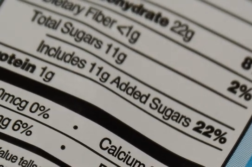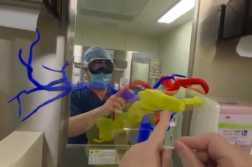ORLANDO, Fla. (Ivanhoe Newswire)— When you think of malaria you probably have images in your mind of South Asian countries or places in the Sub-Sahara, but 2,000 cases of malaria are diagnosed every year in the United States. Malaria causes high fever and chills as the infection spreads and can be fatal if untreated. Ivanhoe has more on the search for new treatments that involve a surprising finding.
In many parts of the world, mosquitos are much more than a nuisance. They spread potentially fatal diseases like malaria and current treatments don’t always work.
“The drugs which are effective against malaria, they are losing their efficacy because of the appearance of drug resistance. So there is a need for new therapies or new drugs,” explained Debopam Chakrabarti, PhD, Professor of Molecular Microbiology, UCF College of Medicine.
Chakrabarti and fellow infectious disease experts have been searching for a new antibiotic when a colleague at the University of Oklahoma found inspiration in an old box of cereal. The researcher opened it to find mold on the round oats and thought it would provide the perfect growing conditions for the fungus the researchers were studying.
“You need a carbohydrate source for growth, and that has certain amount of protein also, which is needed, and sugar,” said Chakrabarti.
Researchers at UCF are taking the fungus grown at the Oklahoma lab and testing it for its ability to kill the parasite that causes malaria. So far, the team has identified more than 150 compounds that have antimalarial properties, meaning they could be a part of a new drug to fight the disease.
Worldwide, malaria is responsible for 400,000 deaths a year. About 80 percent are children under the age of five.
Contributors to this news report include: Cyndy McGrath, Executive Producer; Kirk Manson, Videographer; Roque Correa, Editor.
To receive a free weekly e-mail on medical breakthroughs from Ivanhoe, sign up at: http://www.ivanhoe.com/ftk
Source:
https://www.cdc.gov/malaria/about/index.html
MEDICAL BREAKTHROUGHS
RESEARCH SUMMARY
TOPIC: FIGHTING MALARIA: MOLDY CEREAL TO THE RESCUE?
REPORT: MB #4927
BACKGROUND: Malaria is a disease caused by a parasite. The parasite is spread to humans through the bites of infected mosquitoes. People who have malaria usually feel very sick with a high fever and shaking chills. While the disease is uncommon in temperate climates, malaria is still common in tropical and subtropical countries. Each year nearly 290 million people are infected with malaria, and more than 400,000 people die of the disease. Within 48 to 72 hours, the parasites inside the red blood cells multiply, causing the infected cells to burst open. The parasites continue to infect red blood cells, resulting in symptoms that occur in cycles that last two to three days at a time. To prevent this, World Health Organization programs distribute preventive drugs and insecticide-treated bed nets to protect people from mosquito bites.
(Source: https://www.mayoclinic.org/diseases-conditions/malaria/symptoms-causes/syc-20351184)
CURRENT TREATMENT: The type of medication you receive will vary depending on the type of malaria you have as well as other factors, like age. The most common type of medication is chloroquine phosphate which is the preferred treatment for all types of malaria but as of now the parasites are becoming resistant to this and as a result are less effective. The second one is artemisinin-based combination therapies or ACTs. ACTs are a combination of two or more drugs and are the preferred treatment against malaria in different ways.
(Source: https://www.mayoclinic.org/diseases-conditions/malaria/diagnosis-treatment/drc-20351190)
NEW TECHNOLOGY: Debopam Chakrabarti, a professor at UCF and the head of the Division of Molecular Microbiology mentions that the drugs which are effective against malaria are losing their efficacy because of the appearance of resistance. There is a need for new therapies or new drugs. As of now he’s working with a group at the University of Oklahoma led by Robert Cichewicz. His lab so far is using fungi as the best new way to create a different type of drug and he found by trial and error that an oat-shaped breakfast cereal supports the growth of fungi the best.
(Source: https://www.ucf.edu/news/fighting-malaria-with-moldy-cereal/)
FOR MORE INFORMATION ON THIS REPORT, PLEASE CONTACT:
CHRISTIN SENIOR
If this story or any other Ivanhoe story has impacted your life or prompted you or someone you know to seek or change treatments, please let us know by contacting Marjorie Bekaert Thomas at mthomas@ivanhoe.com




